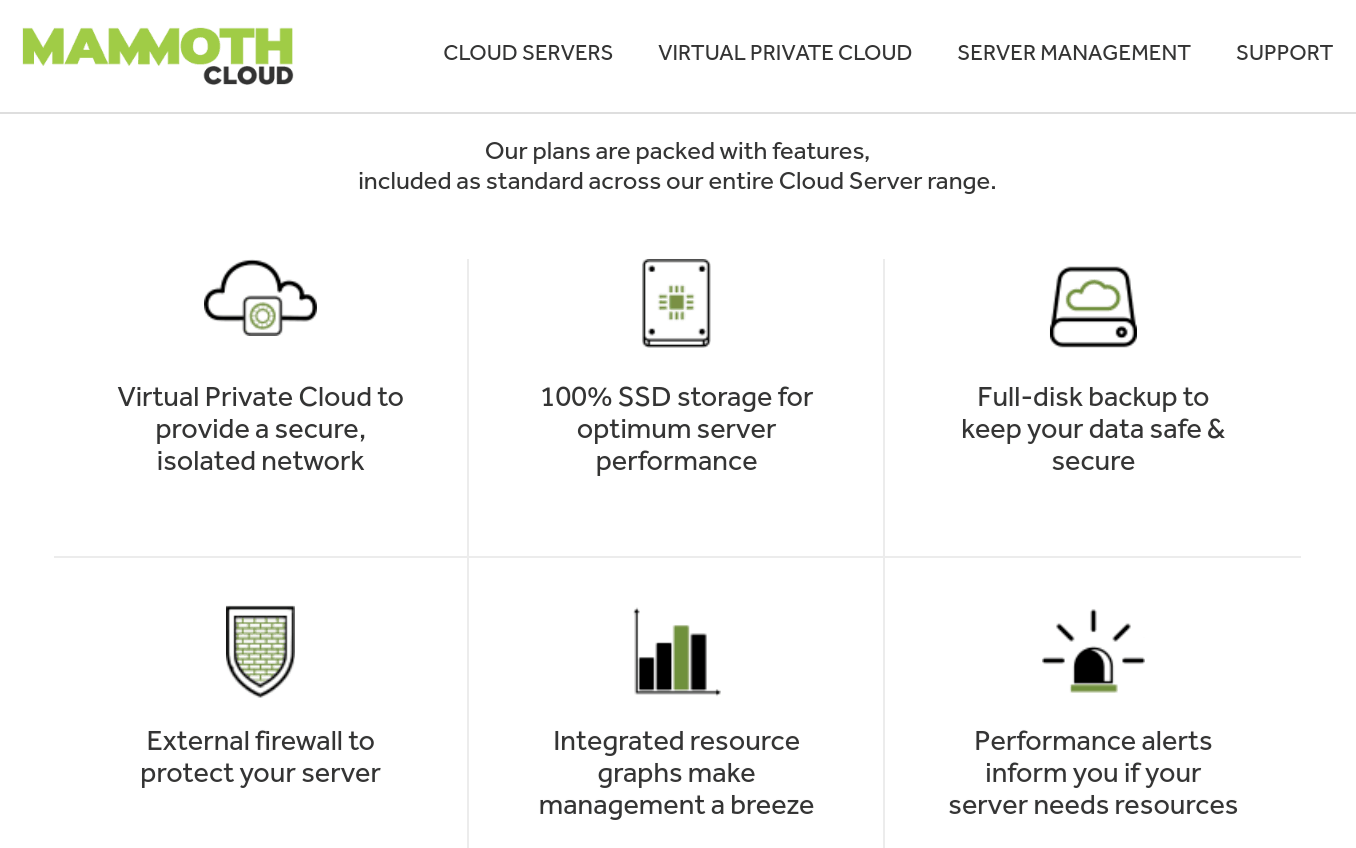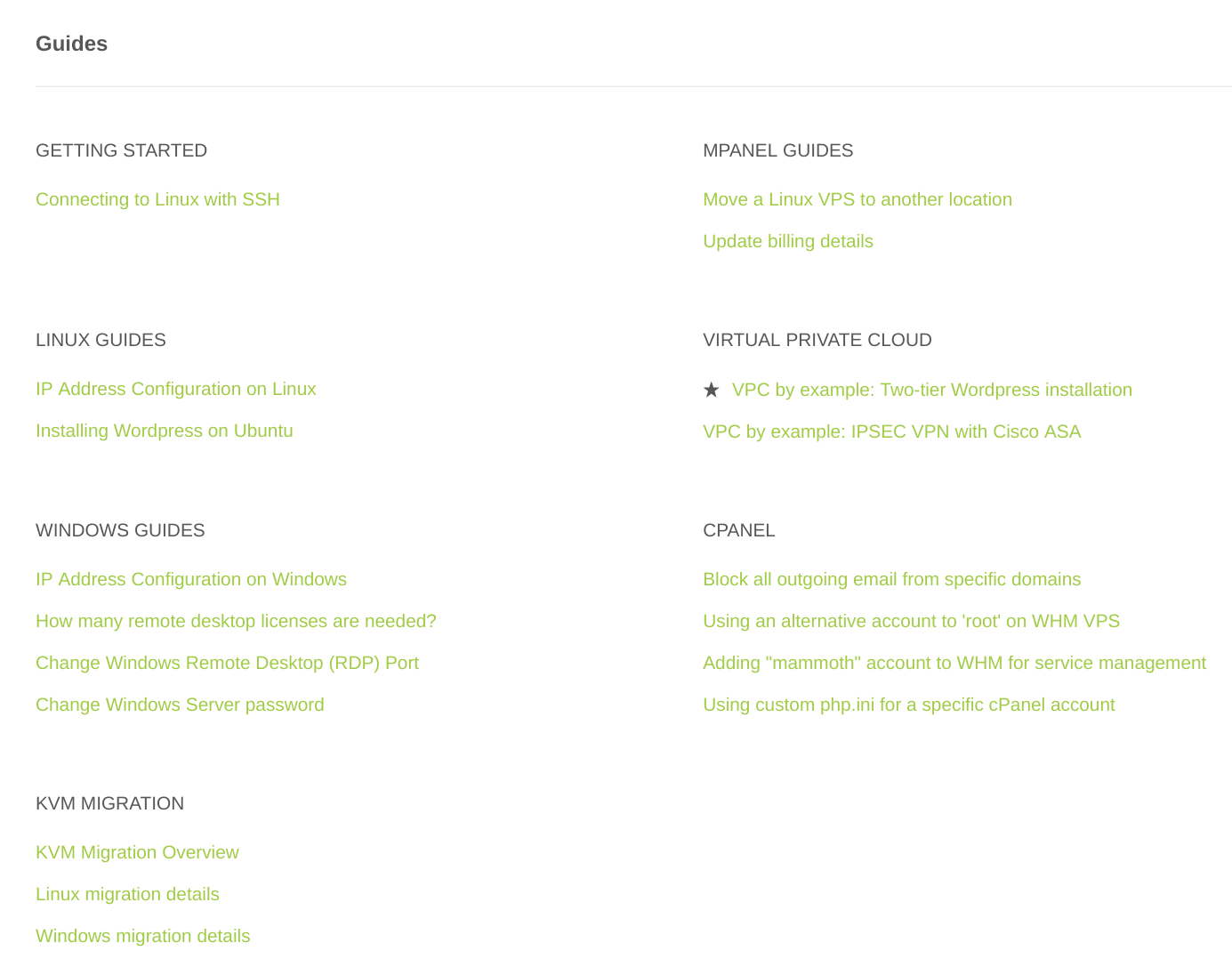
Based in Queensland, Australia, Mammoth Cloud has been providing Windows and Linux cloud hosting solutions since 2009. Its range of products includes cloud hosting, VPS hosting, and server management.
Mammoth has three data centers in Sydney, Melbourne, and Brisbane. Its sleek website is in English.
Features and Ease of Use
While Mammoth no longer offers web hosting, it does provide cloud VPS plans that feature:
- 100% SSD disk storage
- Configurable external firewall
- Full disk backup
- 99.9% SLA
- Full N+1 hardware redundancy
The Linux cloud plans come with 20 GB to 150 GB web space and 100 GB to 800 GB data transfer. The servers are pre-installed and ready-to-use, and you can choose between different Linux versions including Ubuntu, Debian, and CentOS with SSH access.
This provider also offers cPanel cloud VPS packages that come with 40 GB to 300 GB disk space and 300 GB to 3000 GB data transfer. The licensed cPanel control panel is preinstalled and ready to use, so you just need to connect to the WHM interface. You can choose to deploy the cloud VPS on the public cloud or your own virtual private cloud.
In addition to the cPanel control panel, Mammoth also provides its own custom control panel called ‘mPanel’. This control panel is loaded with useful features, such as access to your VPS through a web-based SSH client. With mPanel, you can easily upgrade or downgrade your VPS disk space or data transfer, change the operating system, customize backup settings, configure network and VPS settings, and much more.
Pricing and Support
Cloud VPS plans are categorized as General Purpose and Compute Optimized, each category comprising four packages with differing disk space, RAM, and other features depending on the operating system you’re using.
You can pay for plans using PayPal or credit/debit cards, and as you might expect, the Windows plans are slightly more expensive than the Linux plans.
Unfortunately, there is no clear refund policy, and customer support never got back to me when I tried contacting the company via support ticket and email. There is no live chat, but you can try the telephone number if you’re in Australia.
For self-support, there’s a decent set of FAQs and tutorial guides:











